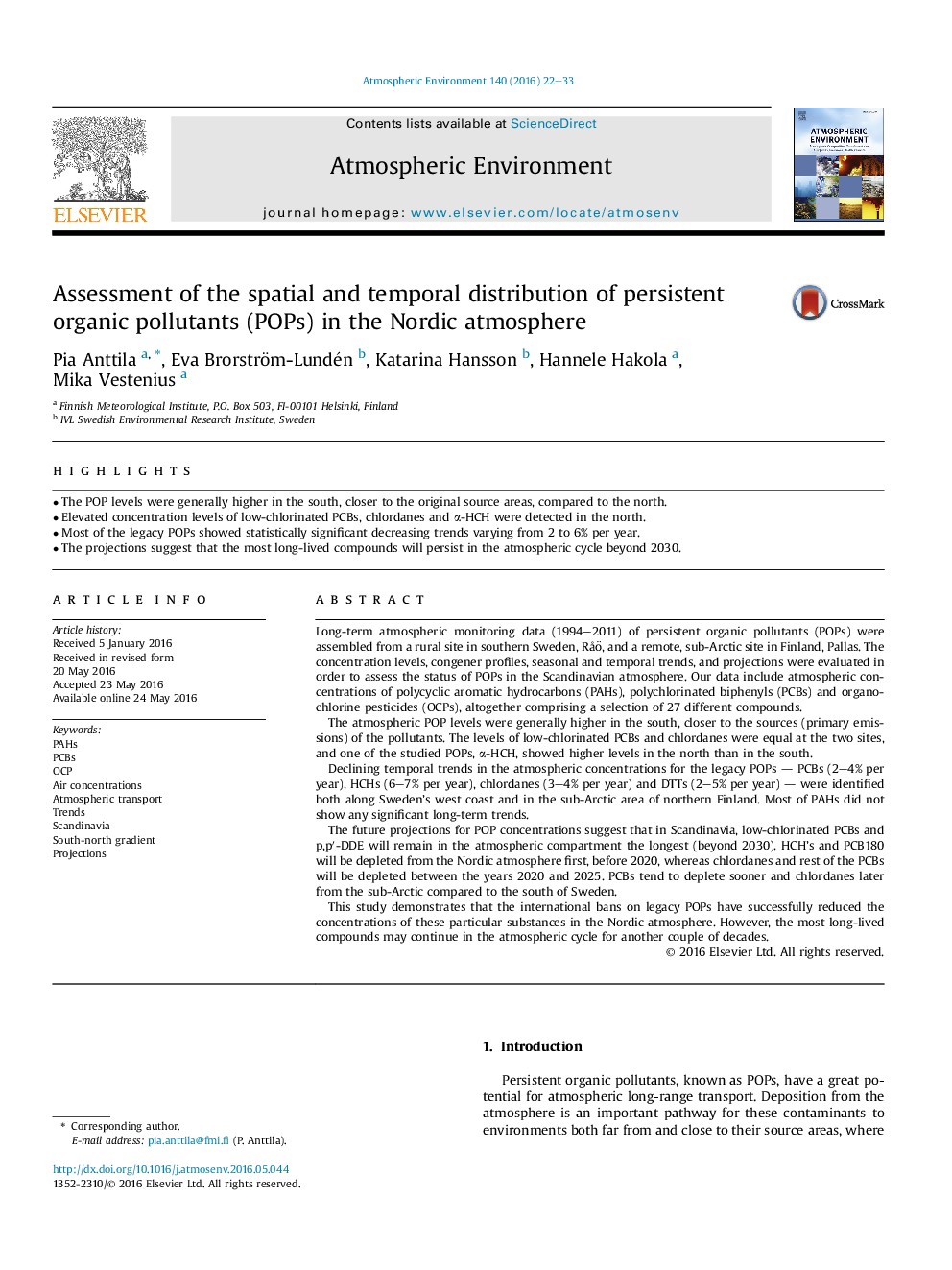| کد مقاله | کد نشریه | سال انتشار | مقاله انگلیسی | نسخه تمام متن |
|---|---|---|---|---|
| 6336136 | 1620334 | 2016 | 12 صفحه PDF | دانلود رایگان |

- The POP levels were generally higher in the south, closer to the original source areas, compared to the north.
- Elevated concentration levels of low-chlorinated PCBs, chlordanes and α-HCH were detected in the north.
- Most of the legacy POPs showed statistically significant decreasing trends varying from 2 to 6% per year.
- The projections suggest that the most long-lived compounds will persist in the atmospheric cycle beyond 2030.
Long-term atmospheric monitoring data (1994-2011) of persistent organic pollutants (POPs) were assembled from a rural site in southern Sweden, RÃ¥ö, and a remote, sub-Arctic site in Finland, Pallas. The concentration levels, congener profiles, seasonal and temporal trends, and projections were evaluated in order to assess the status of POPs in the Scandinavian atmosphere. Our data include atmospheric concentrations of polycyclic aromatic hydrocarbons (PAHs), polychlorinated biphenyls (PCBs) and organochlorine pesticides (OCPs), altogether comprising a selection of 27 different compounds.The atmospheric POP levels were generally higher in the south, closer to the sources (primary emissions) of the pollutants. The levels of low-chlorinated PCBs and chlordanes were equal at the two sites, and one of the studied POPs, α-HCH, showed higher levels in the north than in the south.Declining temporal trends in the atmospheric concentrations for the legacy POPs - PCBs (2-4% per year), HCHs (6-7% per year), chlordanes (3-4% per year) and DTTs (2-5% per year) - were identified both along Sweden's west coast and in the sub-Arctic area of northern Finland. Most of PAHs did not show any significant long-term trends.The future projections for POP concentrations suggest that in Scandinavia, low-chlorinated PCBs and p,pâ²-DDE will remain in the atmospheric compartment the longest (beyond 2030). HCH's and PCB180 will be depleted from the Nordic atmosphere first, before 2020, whereas chlordanes and rest of the PCBs will be depleted between the years 2020 and 2025. PCBs tend to deplete sooner and chlordanes later from the sub-Arctic compared to the south of Sweden.This study demonstrates that the international bans on legacy POPs have successfully reduced the concentrations of these particular substances in the Nordic atmosphere. However, the most long-lived compounds may continue in the atmospheric cycle for another couple of decades.
Journal: Atmospheric Environment - Volume 140, September 2016, Pages 22-33